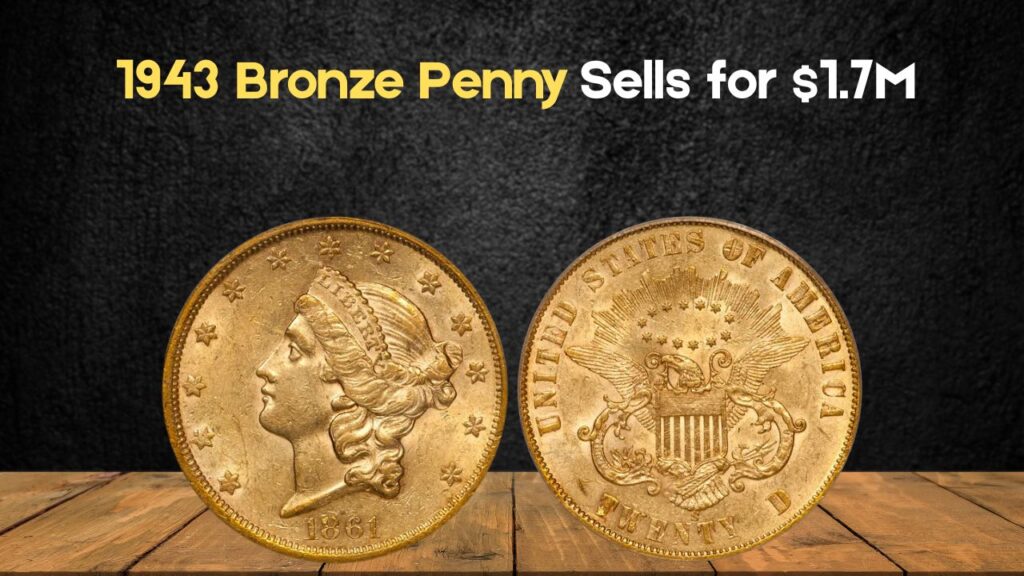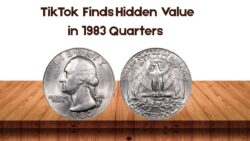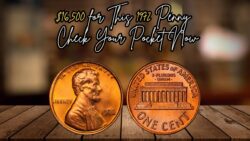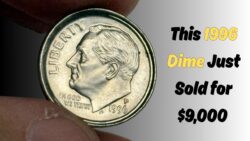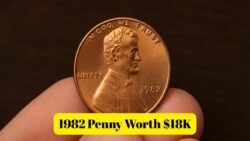1943 Bronze Penny Error – Coin collectors and treasure hunters around the world are once again buzzing with excitement as the legendary 1943 Bronze Penny Error has gone viral — again! Known as one of the rarest and most valuable coins in American history, this small copper coin has turned ordinary people into millionaires overnight. Recently, a single 1943 bronze penny sold for a staggering $1.7 million at a public auction, reigniting interest in old coin collections everywhere. But what exactly makes this coin so valuable? Why are collectors willing to pay such insane prices for it? And how can you tell if you’ve got one of these hidden treasures sitting in an old jar at home? This article dives into the fascinating backstory, technical error, and explosive rise in value of the 1943 bronze penny — including how it became one of the most talked-about coins on the internet in 2025.
Why Was the 1943 Bronze Penny Even Made?
To understand the rarity of this coin, we need to rewind the clock to World War II. In 1943, the U.S. Mint stopped producing pennies in their regular bronze composition (95% copper, 5% tin and zinc) and began making them from zinc-coated steel instead. The reason? Copper was in high demand for wartime ammunition and other military equipment.
That year, nearly 1.1 billion steel cents were produced, and they looked noticeably different — silver-gray instead of the usual reddish-brown. However, a small number of bronze planchets (the coin blanks used for minting) accidentally remained in the minting machines and were struck as 1943 pennies.
This mistake created what is now known as the 1943 Bronze Penny Error.
How Many 1943 Bronze Pennies Exist?
Experts estimate that only 10 to 20 genuine bronze 1943 pennies were ever minted — making them ultra-rare. A few have been discovered over the decades, with the majority coming from the Philadelphia Mint. There are also rare 1943 bronze cents from the San Francisco (marked with an ‘S’) and Denver (marked with a ‘D’) mints, but these are even rarer.
The low numbers combined with high demand from collectors make these coins some of the most valuable in the world.
The $1.7 Million Auction – What Happened?
The most recent viral moment happened in August 2025, when a well-preserved 1943 bronze penny was sold at a high-profile coin auction for a jaw-dropping $1.7 million. The coin was graded MS63 Red-Brown by PCGS (Professional Coin Grading Service), indicating an impressive level of preservation and luster.
This sale broke previous records and sparked widespread interest online, especially on TikTok, YouTube, and Reddit coin-collecting forums. Several content creators shared stories of finding rare coins in their change, urging viewers to check old piggy banks and drawers.
How to Tell If You Have a Real 1943 Bronze Penny
Here’s a quick checklist to identify if you may have a 1943 bronze penny (and not a regular steel one):
- Check the year: It should read “1943”.
- Use a magnet: Steel cents will stick to a magnet, but bronze ones will not.
- Color and shine: Bronze coins are reddish-brown. Steel coins appear silver or gray.
- Weight: Bronze cents weigh about 3.11 grams, while steel cents weigh 2.7 grams.
- Mint mark: Located below the year. A plain coin is from Philadelphia, ‘D’ is Denver, and ‘S’ is San Francisco.
If your coin passes all of these tests, do not clean it — this can lower its value. Take it to a professional coin dealer or send it to PCGS or NGC for grading and authentication.
Why Is This Coin Still Going Viral in 2025?
The popularity of this rare coin has surged once again due to a combination of social media trends, inflation-driven investment interest, and nostalgia for physical collectibles.
- TikTok influencers showcasing coin finds have revived public excitement.
- Economic uncertainty has made people more interested in tangible assets.
- Record-breaking auction prices have inspired people to dig through old jars of change.
Coin collecting has now entered mainstream culture — and the 1943 bronze penny has become a symbol of unexpected wealth and “hidden treasure” waiting to be discovered.
Other Rare Coins to Look Out For
While the 1943 bronze penny is the star of the show, there are several other valuable error coins worth knowing about:
- 1944 Steel Penny – Reverse of the 1943 error. These were steel instead of bronze in 1944. Worth up to $100,000.
- 1955 Double Die Lincoln Cent – Famous for its strong doubling of the date and lettering.
- 1972 Double Die Obverse – Another Lincoln penny with visible doubling.
- 1982 No Mint Mark Roosevelt Dime – Rare variation due to minting errors.
- 2004 Wisconsin Extra Leaf Quarter – A state quarter with an extra corn leaf, worth thousands.
The 1943 Bronze Penny Error is a reminder that sometimes, tiny objects can carry massive value — especially when history, rarity, and human error combine. With one of these coins selling for over $1.7 million, the chances of finding hidden treasure in your home are not as far-fetched as they seem.
As more stories go viral, now is the perfect time to check your coin collections, old wallets, and jars for this legendary penny. You never know — you might be holding onto a piece of history worth more than gold!
FAQs
Q1: How much is a 1943 bronze penny worth today?
A genuine 1943 bronze penny can be worth anywhere from $100,000 to over $1.7 million, depending on its condition and mint mark.
Q2: How do I know if my 1943 penny is bronze or steel?
Use a magnet — steel pennies stick, but bronze ones do not. Also check the color; bronze is brownish-red.
Q3: Where can I get my coin authenticated?
You can send your coin to PCGS or NGC, the two most trusted coin grading services in the U.S.
Q4: Can I find a 1943 bronze penny in circulation today?
It’s extremely rare, but not impossible. Most are found in old collections, inherited coin jars, or estate sales.
Q5: Should I clean my old coin before selling it?
No! Cleaning a rare coin can significantly reduce its value. Always get professional advice before altering it.

